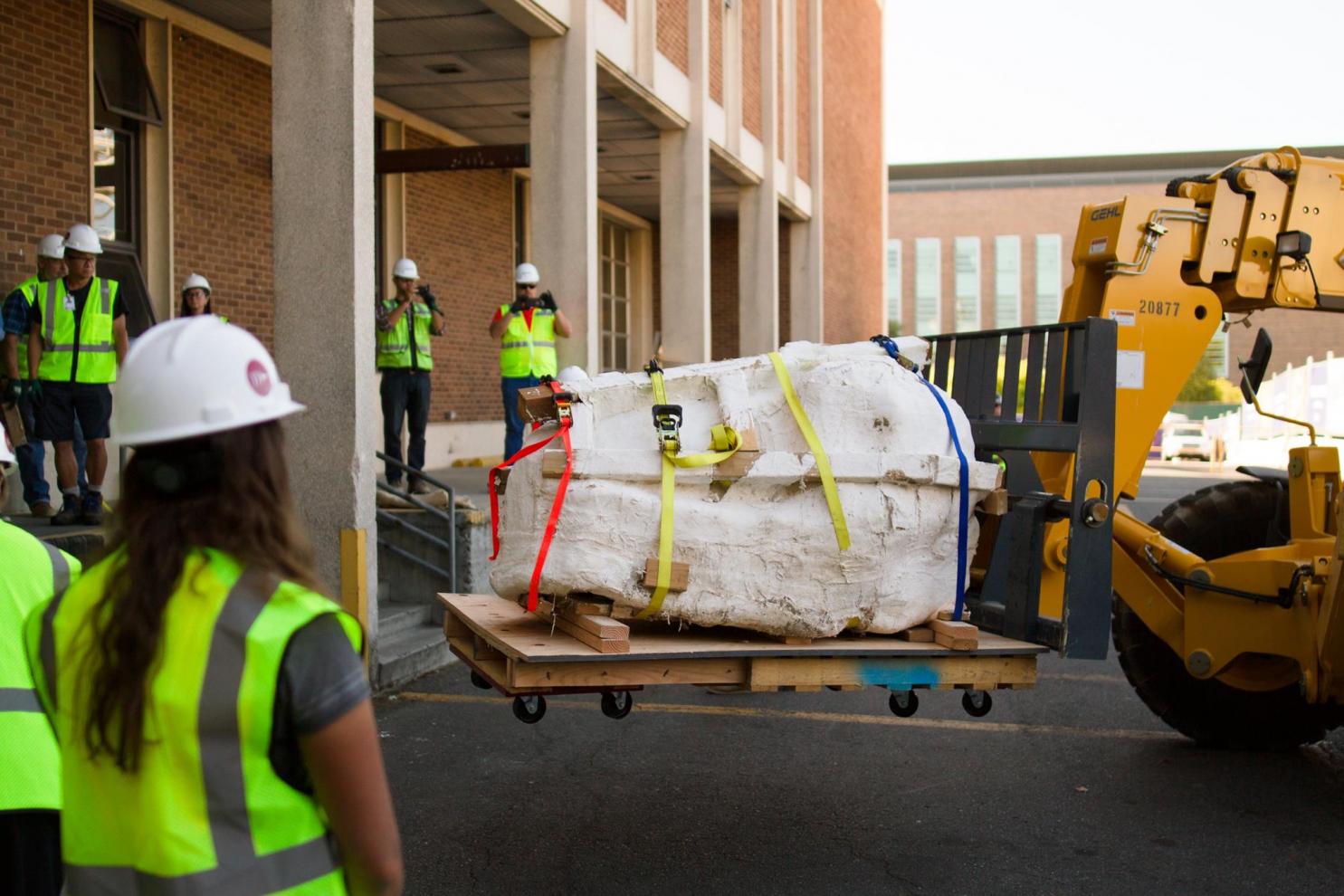Graduate students in the field — Studying lizards in Yosemite National Park
Sima Bouzid, a PhD student in the Buckley and Leaché labs, worked in Yosemite National Park this summer studying populations of Western fence lizards.
She explores why lizards at high elevations have developed a unique phenotype: both males and females are larger, darker and have more dark blue coloration than their low-elevation counterparts. Do these differences help lizards adapt to the cooler condition and shorter active seasons at high elevations?
Although Sima enjoyed her summer in the field with the breathtaking Yosemite scenery; working in one of that nation’s most popular (and crowded) national parks isn’t always easy.Over the summer, she dealt with heavy traffic due to bear jams and even a wildfire, which forced her to evacuate the field station she was working in! Fortunately, she was able to return to the field station (safe and sound) to continue her work before the summer ended.
Check out Sima’s work and other Buckley and Leaché lab happenings online.
MeadoWatch — Citizen Science at Mt. Rainier
 MeadoWatch is a citizen scientist program run by Director and Department of Biology Professor Janneke Hille Ris Lambers. They are happy to report another successful season: the program began in 2013 with 41 volunteers — this year the program had roughly 150 volunteers gathering data in Mount Rainer National Park!
MeadoWatch is a citizen scientist program run by Director and Department of Biology Professor Janneke Hille Ris Lambers. They are happy to report another successful season: the program began in 2013 with 41 volunteers — this year the program had roughly 150 volunteers gathering data in Mount Rainer National Park!
The program helps researchers fill gaps in the data about how climate variation is impacting plant and animal life. The information gathered by volunteers is critical for understanding how variation in climate, from year to year and location to location, influences peak flowering for different species.
While data for this year is still incoming and being analyzed, Prof. Hille Ris Lambers says that she expects, “this year to be valuable data wise, because it was simultaneously very snowy at high elevations and quite hot / dry. So it will be interesting to see how that influences flowering.”
Visit their website for more information about MeadoWatch and how to support them — get on the MeadoWatch mailing list to receive results from the field season!
Wilson Lab — Digging up the past during the summer
Lots of exciting updates from Prof. Greg Wilson and his lab this summer: they spent their time in northeastern Montana collecting fossils of all shapes and sizes, and hosted the eighth year of the citizen-scientist DIG field school. 
The team continued collecting the remains of the Tuffs-Love T. Rex skeleton discovered in 2016. This summer, they were able to plaster jacket and take home a number of bones from the T. Rex including a shoulder blade, upper arm bone, ribs, hipbones, vertebrae and lower jawbones.
They also collected plant and vertebrate fossils that lead up to the Cretaceous-Paleogene boundary and mass extinction event. Fossils collected include salamanders, lizards, turtles, mammals and fish, which help provide a better understanding of the magnitude, rate, and nature of the extinctions and how the ecosystem recovered and led to the famous radiation of mammals.
In addition to hunting for fossils, the DIG School hosted 30 teachers from 14 different states and Canada. Over the course of four days, teachers had authentic research experiences and learned how to best incorporate paleontology and geology into the classroom.
Stay up-to-date with Biology’s vertebrate paleontology group at the Burke Museum.
